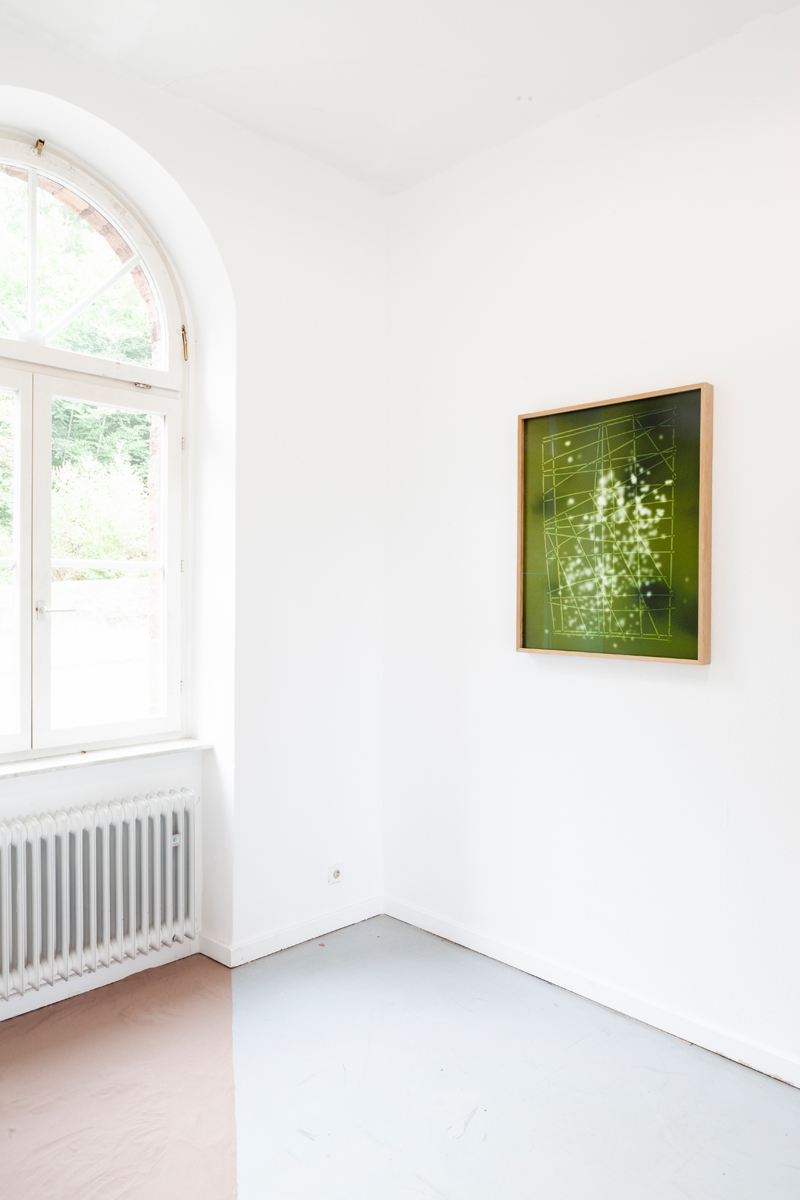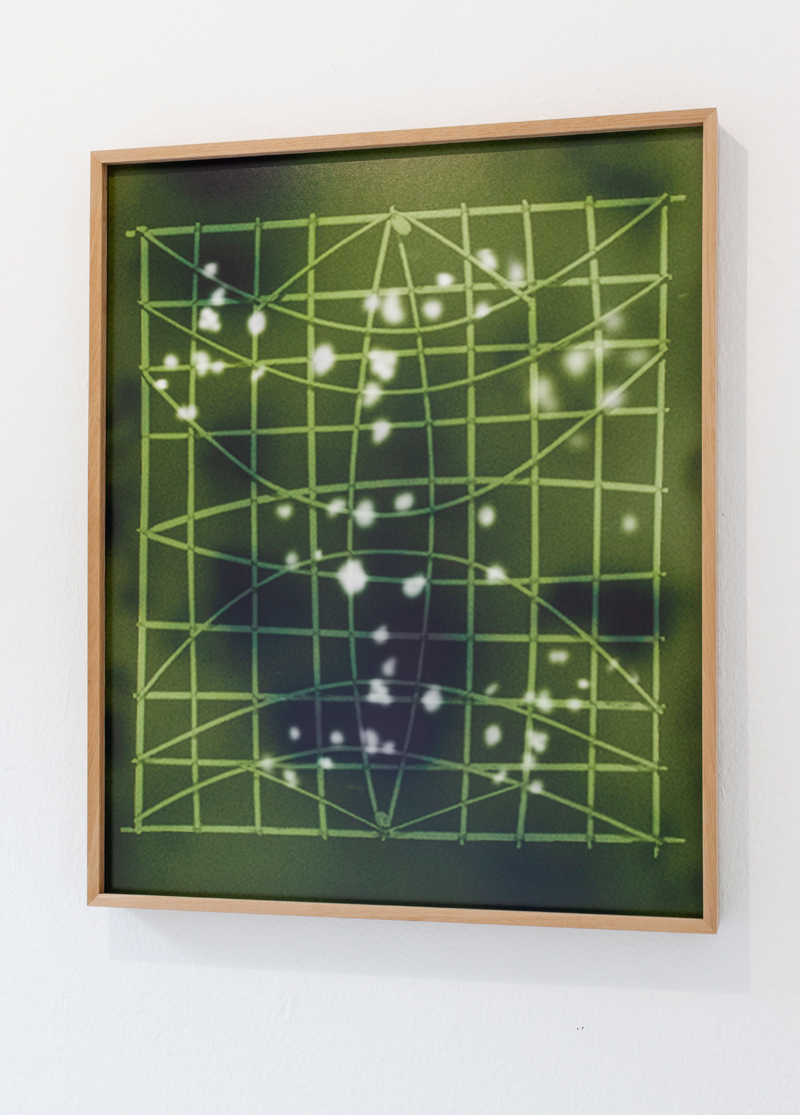


The artwork Mattang presents a powerful commentary on the relationship between technology and tradition. The piece features negatives of photographs of stick charts, ancient navigation tools used by Polynesian sailors to navigate the Pacific Ocean. These charts, crafted from the mid-ribs of coconut fronds and shells, depict the personal experiences and knowledge of navigating the ocean. However, the artwork takes on a deeper meaning as the negatives have been exposed to radioactive samples from Enewetak Atoll and the photographic paper they are developed on has been irradiated with uranium-rich ore from French and American uranium mines.The radioactivity leaves white traces that overlay the stick charts in the photographs serves as a haunting reminder of the destructive impact of humanity on the environment. This imagery evokes the contrast between the ancient art of navigation and the modern reliance on technology, where asking an app for our location has replaced the essential skills once needed for survival. The stick charts, now unusable and contaminated by radioactivity, represent the personal navigation devices of long-dead sailors, while the white haze, representing a non-existent star constellation, highlights the disorientation in time and space that humanity faces today. Through this artwork, the viewer is invited to contemplate the relationship between tradition and technology, and the impact of humanity on the environment. The piece encourages us to consider the fleeting nature of our existence and the enduring impact of our actions on the world around us.
#mattang#technology#tradition#navigation#sailors#pacific#radioactivity#impact#environment#impact#nature#radioactive#nucleartests#2018